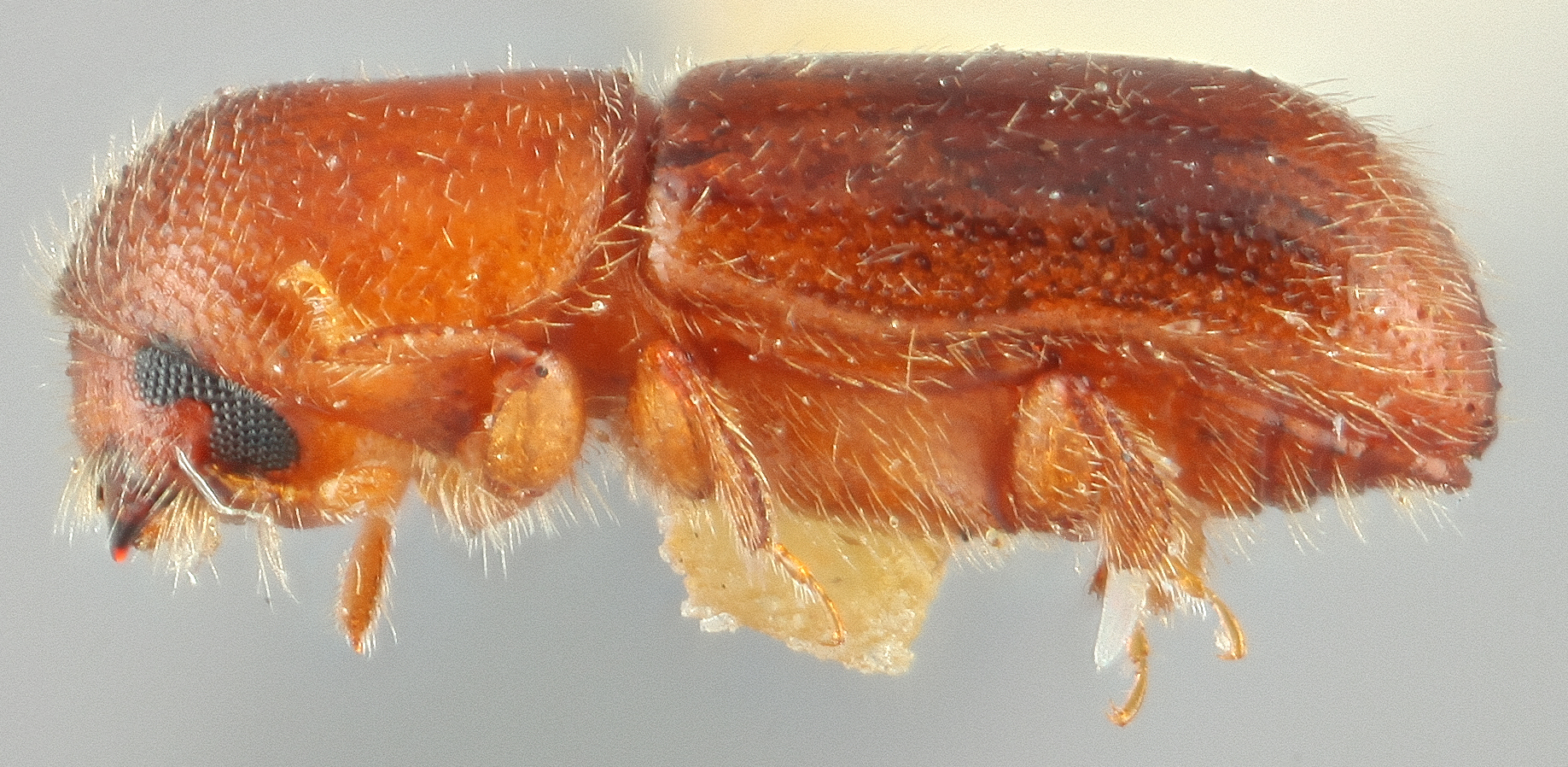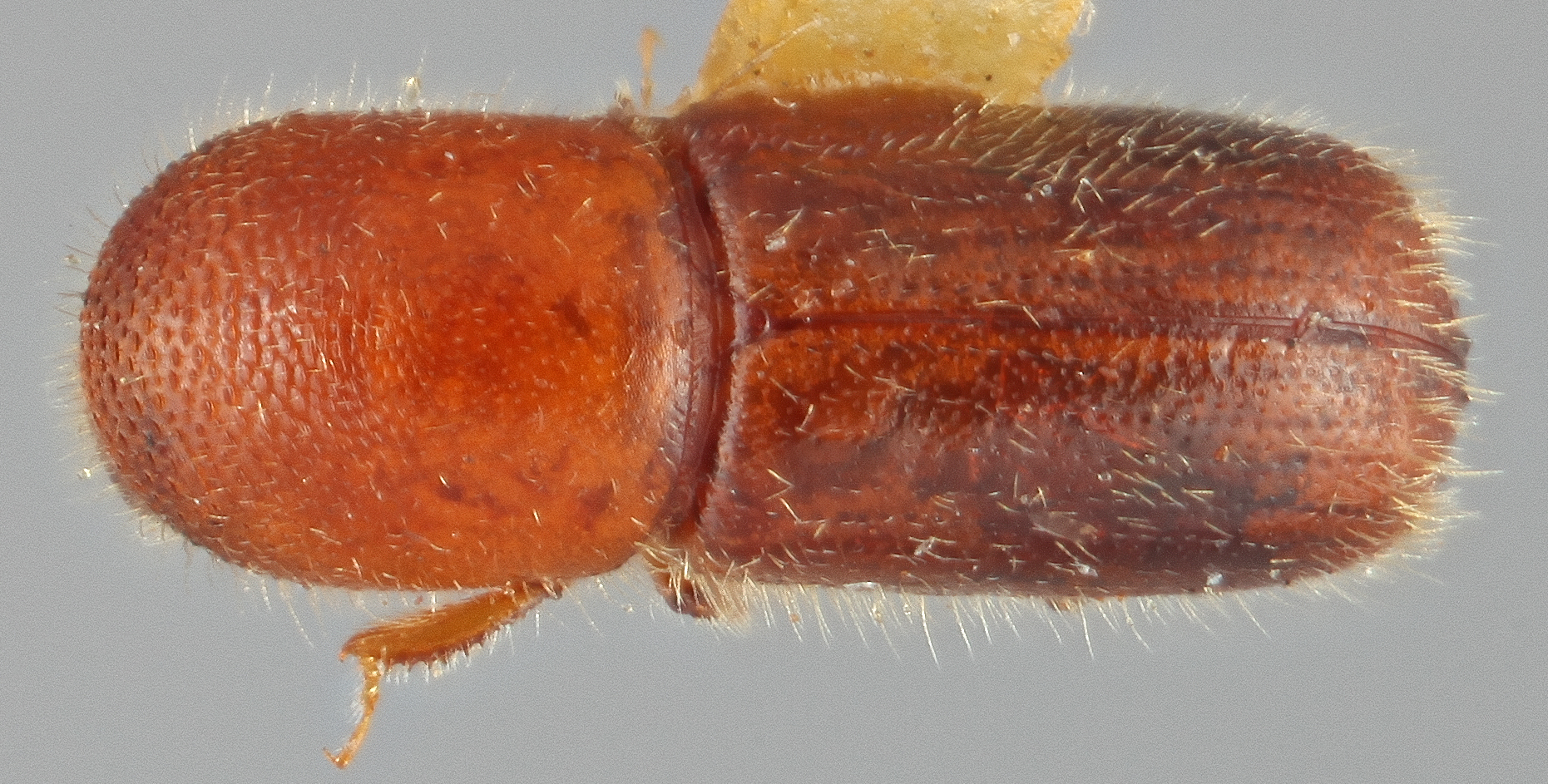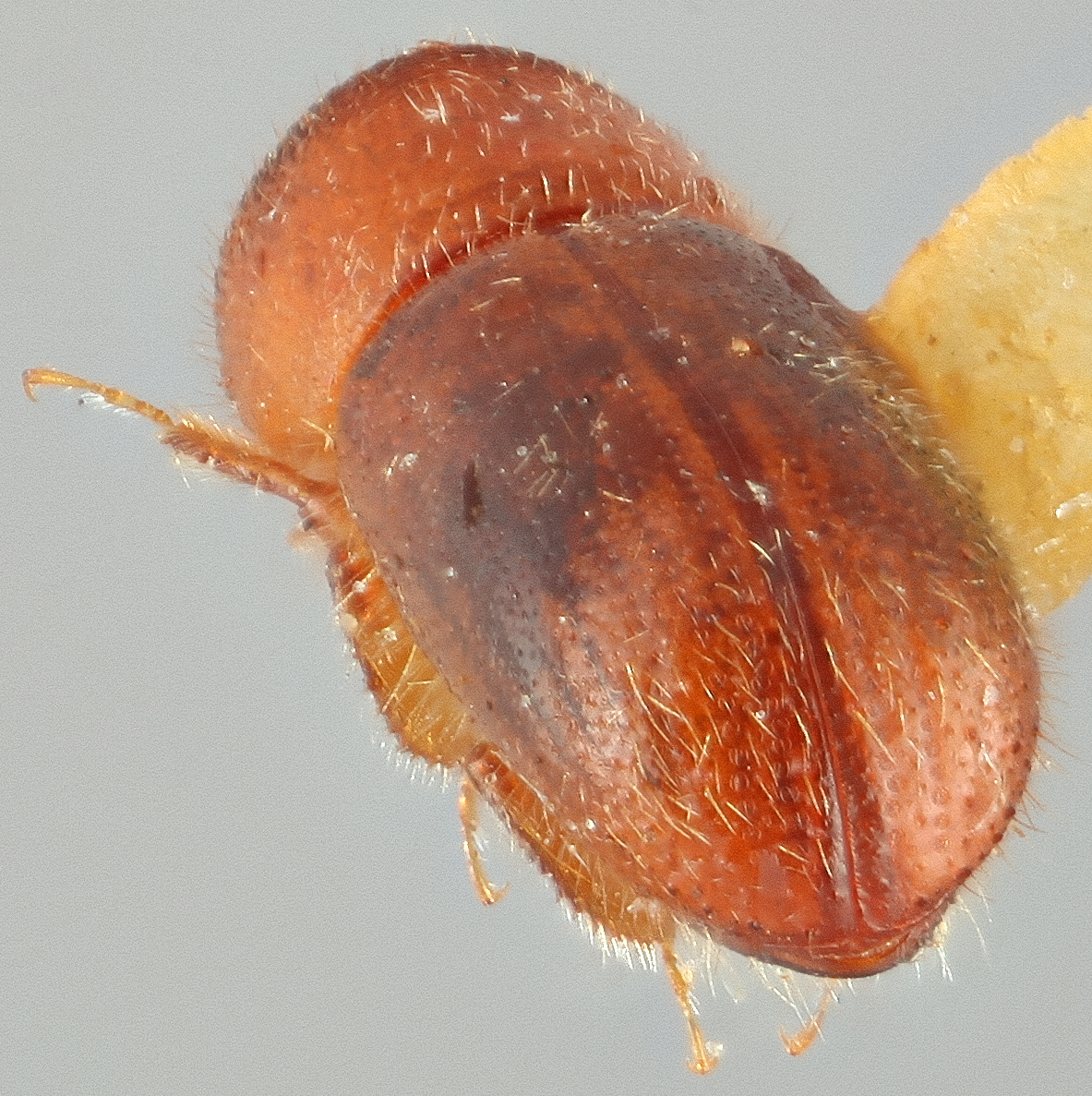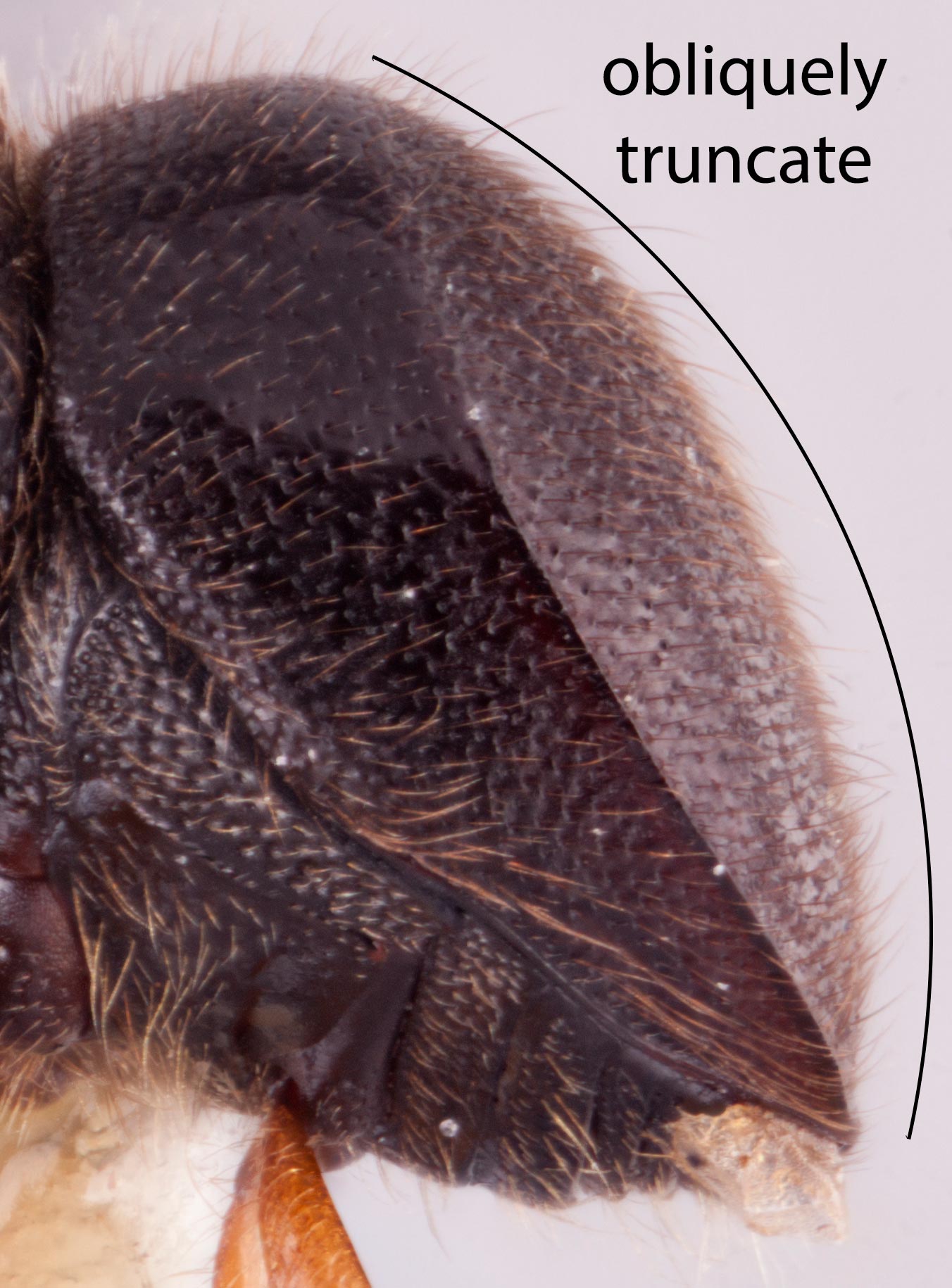Cyclorhipidion californicum
|
Cyclorhipidion californicum holotype lateral; S.M. Smith |
|
Cyclorhipidion californicum holotype lateral; S.M. Smith |
|
Cyclorhipidion californicum holotype declivity; S.M. Smith |
|
Cyclorhipidion californicum holotype frontal; S.M. Smith |
Taxonomic history
Xyleborus californicus Wood, 1975b: 399.
Cyclorhipidion californcum (Wood): Knížek 2011: 245 (as a synonym of C. bodoanum).
Diagnosis
2.2 mm long, 3.14 times as long as wide (n = 1). This species is distinguished by the short, steep declivitydeclivity:
downward slope of either the pronotum or elytra
 that is approximately 25% of total elytralelytral:
that is approximately 25% of total elytralelytral:
pertaining to the elytra
length, armed with large tuberclestubercle:
a small knob-like or rounded protuberance of the exoskeleton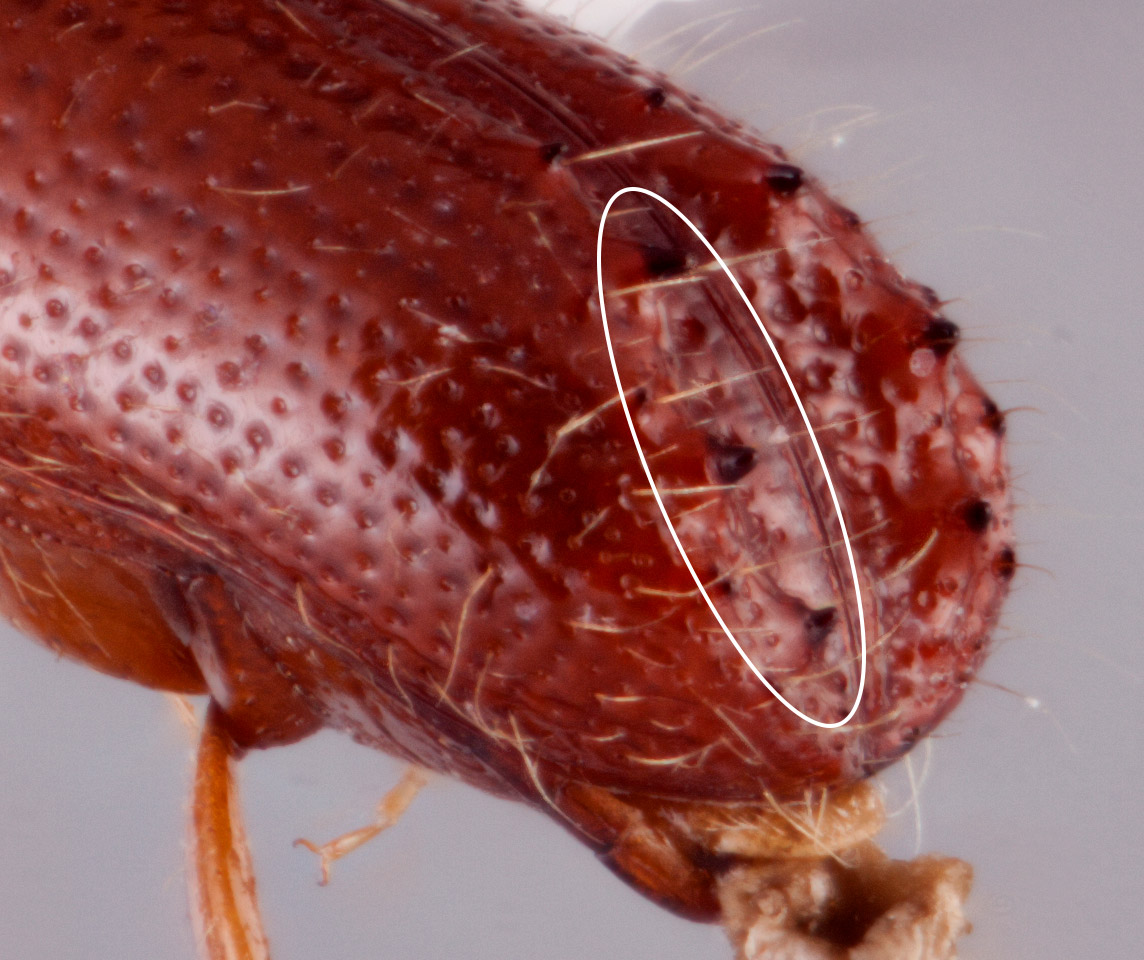 on interstriaeinterstria:
on interstriaeinterstria:
longitudinal spaces along the elytra between the striae, which is not as<br />
impressed and bear smaller punctures.
 1 and 3, interstriaeinterstria:
1 and 3, interstriaeinterstria:
longitudinal spaces along the elytra between the striae, which is not as<br />
impressed and bear smaller punctures.
 2 always unarmed; posterolateralposterolateral:
2 always unarmed; posterolateralposterolateral:
relating to end of the side part/portion
 margins rounded; and declivitaldeclivital:
margins rounded; and declivitaldeclivital:
pertaining to the elytral declivity
interstriae 1 and 2 setaeseta:
small hair-like or scale-like structure
biseriate.
May be confused with
This species most closely resembles C. bodoanum, C. cognatoi Lin and Smith, 2022, C. nemesis, C. tenuigraphum, and C. xeniolum.
This species is a part of the challenging C. pelliculosum species group. Species in the group are most easily distinguished by the rows of setaeseta:
small hair-like or scale-like structure
along declivitaldeclivital:
pertaining to the elytral declivity
interstriae 1and 2. See table below:
|
species |
declivital declivital: |
declivital declivital: |
total body length (mm) |
total body length/width ratio |
lateral lateral: |
interstriae 2 granules |
interstriae 1 & 3 granules |
|
C. achlys Smith, Beaver, and Cognato, 2022 |
3 |
1 |
3.4 |
3.09 |
steeply rounded |
absent |
present |
|
C. beaveri Lin and Smith, 2022 |
1 |
1 |
1.68−1.85 |
2.91−3.05 |
steeply rounded |
present |
present |
|
2 |
1 |
1.6−2.4 |
2.5−3.29 |
steeply rounded |
absent |
present |
|
|
C. californicum |
2 |
2 |
2.2 |
3.14 |
steeply rounded |
absent |
present |
|
C. cognatoi Lin and Smith, 2022 |
2 |
1 |
2.95−3.28 |
2.82−2.93 |
steeply rounded |
absent |
present |
|
3 |
2 |
2.5−3.11 |
2.6−3.0 |
steeply rounded |
absent |
present |
|
|
2 |
1 |
2.75−3.0 |
2.75−3.0 |
steeply rounded |
absent |
present |
|
|
1 |
1 |
2−2.2 |
2.75−3.07 |
steeply rounded |
absent |
present |
|
|
3 |
1 |
3.2−3.5 |
2.67−3.0 |
steeply rounded |
rare, on basalbase: |
present |
|
|
C. taedulum Smith, Beaver, and Cognato, 2022 |
2 |
1 |
2.7 |
3 |
steeply rounded |
absent |
present |
|
2 |
2 |
2.7−3.0 |
2.5−3.0 |
steeply rounded |
Often on apicalapex: |
present |
|
|
2 |
1 |
2.92−3.47 |
2.78 |
steeply rounded |
absent |
absent |
|
|
1 |
1 |
1.65−1.8 |
3.09−3.4 |
obliquely truncateobliquely truncate: |
absent |
present |
Distribution
This undoubtedly Asian species is only known from the United States (California) (Smith and Cognato 2022Smith and Cognato 2022:
Smith SM, Cognato AI. 2022. New exotic beetles found in the United States among pseudocryptic Cyclorhipidion species (Coleoptera: Curculionidae: Scolytinae: Xyleborini) revealed via a multigene phylogeny. Insect Systematics and Diversity Insect Systematics and Diversity 6(4), 2. https://doi.org/10.1093/isd/ixac014).
Host plants
unknown, presumably with a preference for Fagaceae like closely related species
Remarks
This species was considered a synonym of C. bodoanum for a number of years. Smith and Cognato (2022) recently recognized it as distinct from C. bodoanum.
DNA data
specimens not available for sequencing

